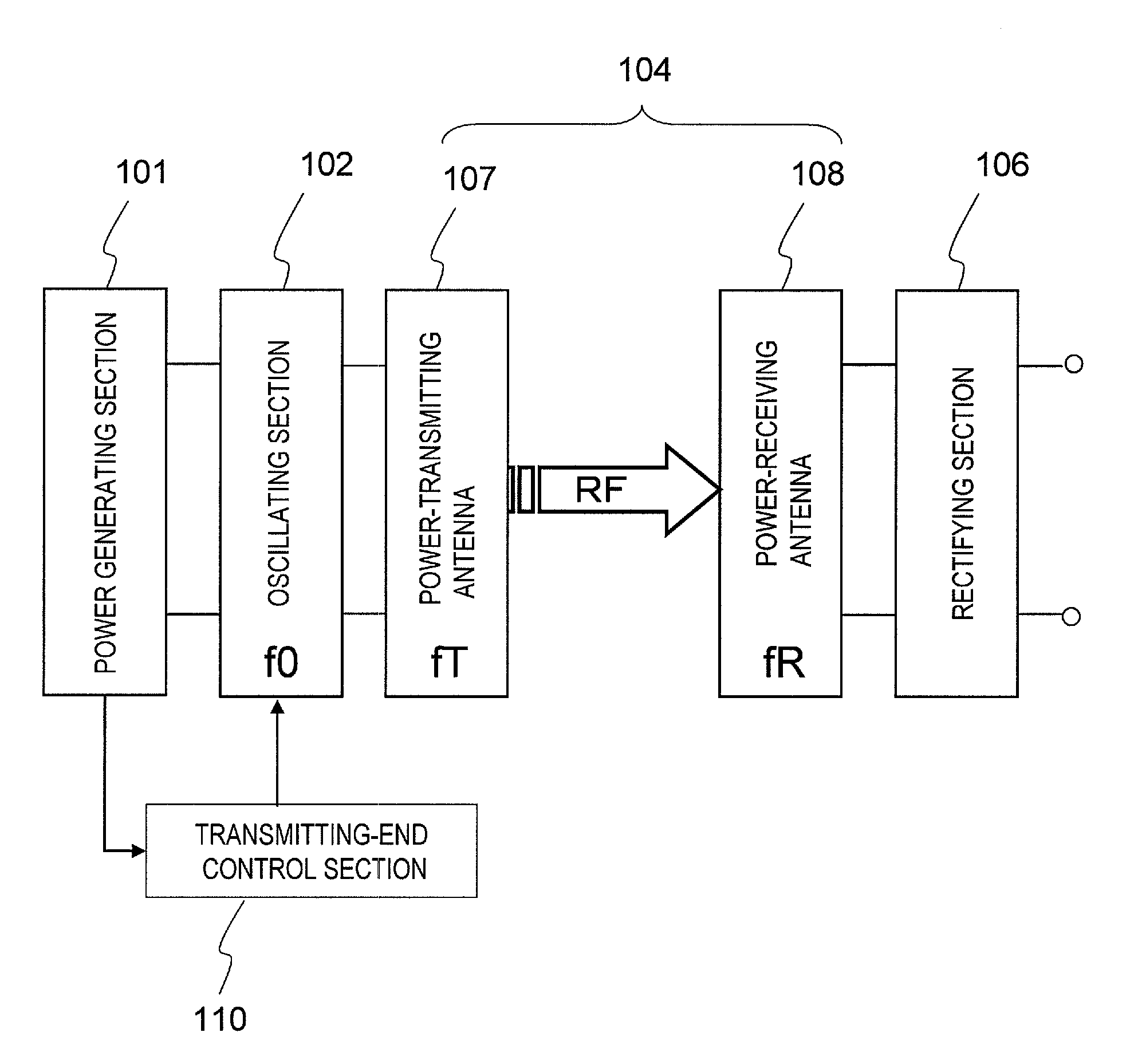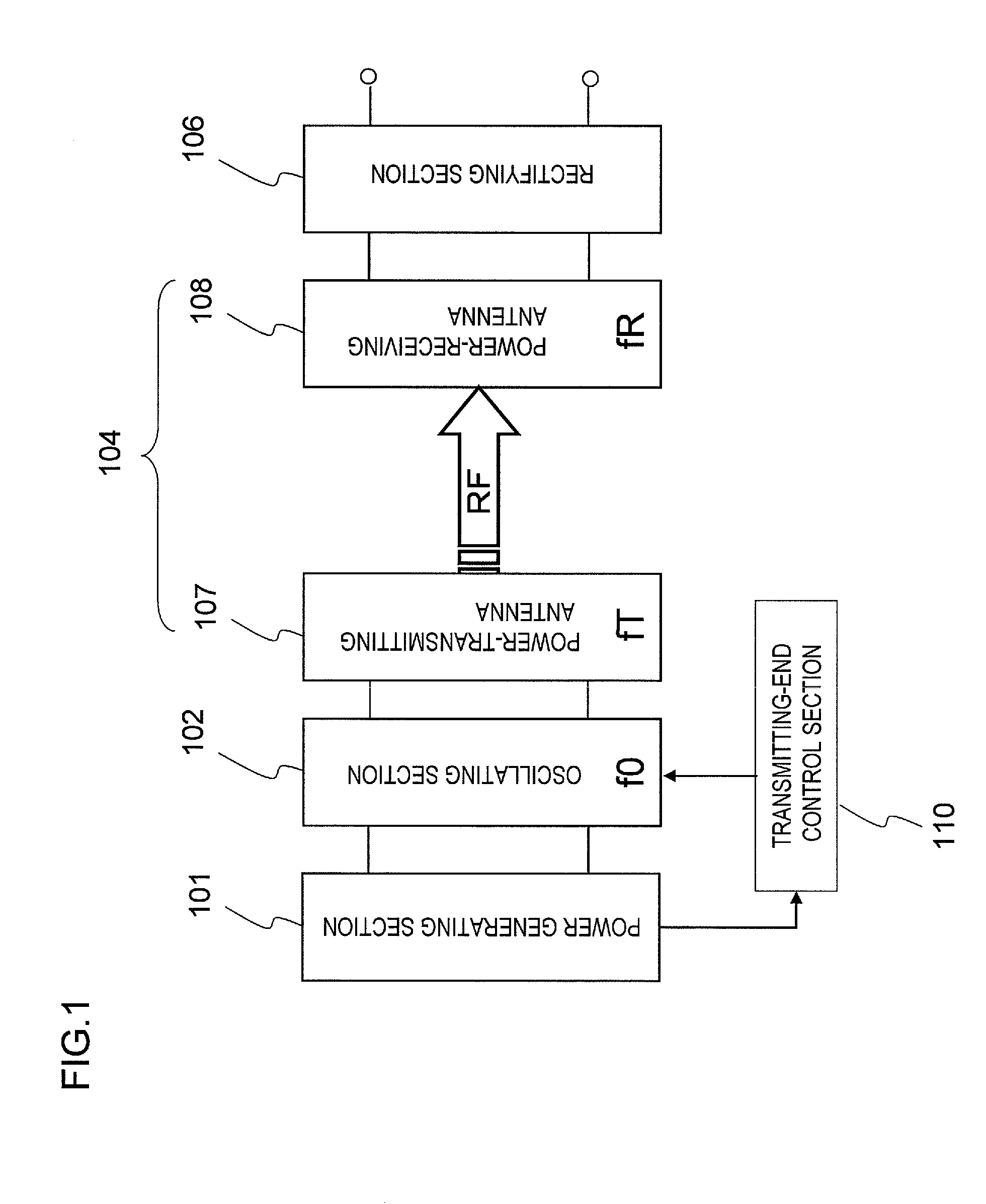Power generating apparatus, power generating system, and wireless electric power transmission apparatus
a power generator and power generating system technology, applied in the direction of exchanging data chargers, pv power plants, inductances, etc., can solve the problems of not being able to ignore, the cost of manufacturing those cells and modules is too high, and the installation cost of solar power generation systems is too high, so as to achieve the effect of reducing the cost of installing the power generator, reducing the cost of replacing a deteriorated part of the power generating section, and hardly
- Summary
- Abstract
- Description
- Claims
- Application Information
AI Technical Summary
Benefits of technology
Problems solved by technology
Method used
Image
Examples
embodiment 1
[0099]Hereinafter, a First Preferred Embodiment of a power generator according to the present invention will be described with reference to FIGS. 5 through 21, in which any component also shown in FIGS. 1 through 4 and having substantially the same function as its counterpart is identified by the same reference numeral.
[0100]FIG. 5 is a schematic representation illustrating a configuration for a power generator as a first specific preferred embodiment of the present invention. As shown in FIG. 5, the power generator of this preferred embodiment includes a power generating section 101, an oscillating section 102, an impedance matching section for oscillating section 103, a wireless transmission section 104, a impedance matching section for rectifying section 105 and a rectifying section 106, which are connected together in series. The rectifying section 106 is connected to, and followed by, a load 113. The power generator further includes an output current and voltage measuring secti...
embodiment 2
[0185]Hereinafter, a preferred embodiment of a power generation system according to the present invention will be described with reference to FIG. 22, which is a block diagram illustrating a power generation system as a second specific preferred embodiment of the present invention. In FIG. 22, any component having substantially the same function as its counterpart of the power generator of the preferred embodiments described above is identified by that counterpart's reference numeral and the description thereof will be omitted herein to avoid redundancies.
[0186]The power generation system shown in FIG. 22 includes a number of power generators 131a, 131b, . . . and 131n that are arranged in parallel with each other. In this preferred embodiment, each of these power generators 131a, 131b, . . . and 131n has the arrangement of the first preferred embodiment described above. However, to achieve the effects of the present invention, the power generation system of the present invention ju...
PUM
| Property | Measurement | Unit |
|---|---|---|
| output voltage | aaaaa | aaaaa |
| output voltage | aaaaa | aaaaa |
| output voltage | aaaaa | aaaaa |
Abstract
Description
Claims
Application Information
 Login to View More
Login to View More - R&D
- Intellectual Property
- Life Sciences
- Materials
- Tech Scout
- Unparalleled Data Quality
- Higher Quality Content
- 60% Fewer Hallucinations
Browse by: Latest US Patents, China's latest patents, Technical Efficacy Thesaurus, Application Domain, Technology Topic, Popular Technical Reports.
© 2025 PatSnap. All rights reserved.Legal|Privacy policy|Modern Slavery Act Transparency Statement|Sitemap|About US| Contact US: help@patsnap.com



